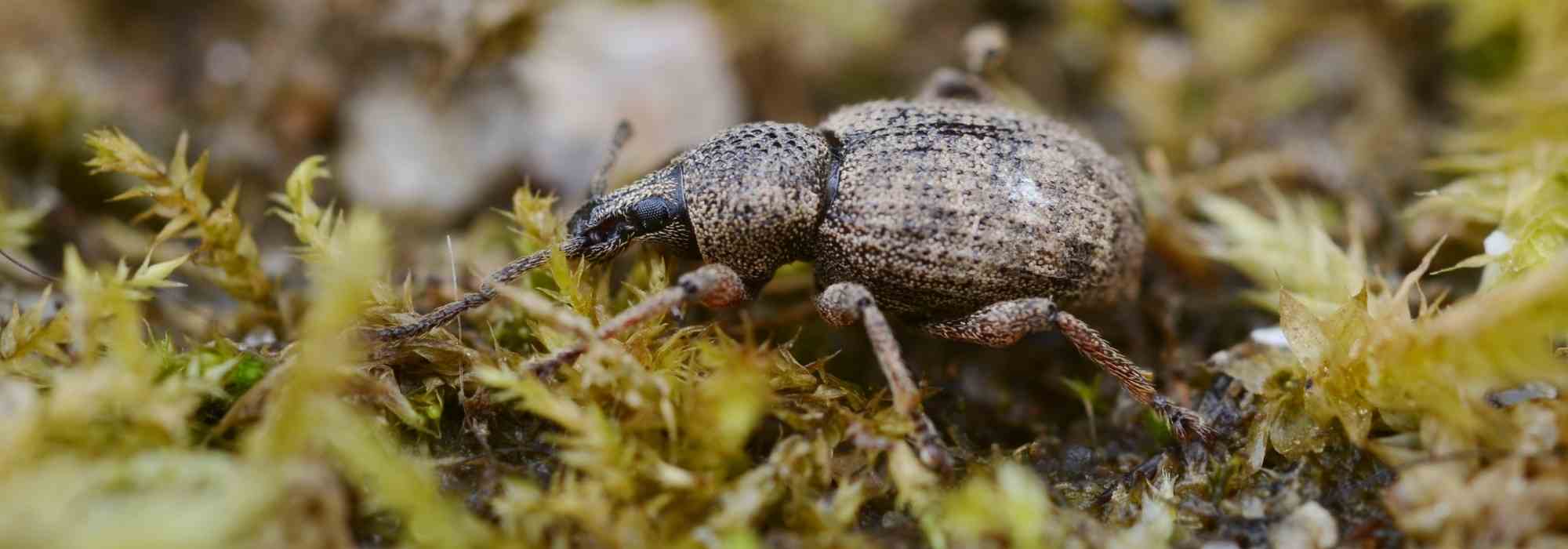
How to get rid of vine weevils?
Recognise it and tackle it naturally
Contents
Belonging to the highly diverse family of weevils, vine weevils are small beetles that can cause serious damage to the roots of your perennial and woody plants. These little critters are relatives of the palm weevil, hazelnut weevil and pine weevil, all well known to foresters. Increasingly common in our gardens thanks to dry, hot summers caused by climate warming, they need to be recognised and identified in order to be controlled as effectively as possible.
Discover this destructive pest and a whole series of tips to control this annoying host in our gardens as effectively as possible.
Recognising the vine weevil
Vine weevils are small beetles (7 to 10 mm) that are very inconspicuous and not easy to spot in the garden.
Mainly nocturnal and often dark-coloured, these curculionids are hard to see, and it is only once damage becomes visible that their presence is suspected. They can, however, be seen by day on plant leaves but will drop to the ground and curl into a ball if you get too curious.
More than 900 species belonging to this genus have been identified in nature, but only a few are harmful.
Like all insects in their family, they possess a rostrum (a kind of grinding mouthpart) used to turn leaves of your favourite plants into lace. Their antennae are elbowed and their elytra (shell) are speckled with white. Their larva (legless) is small, curved, stout and lodged beneath soil surface in a root it will use as home and larder.
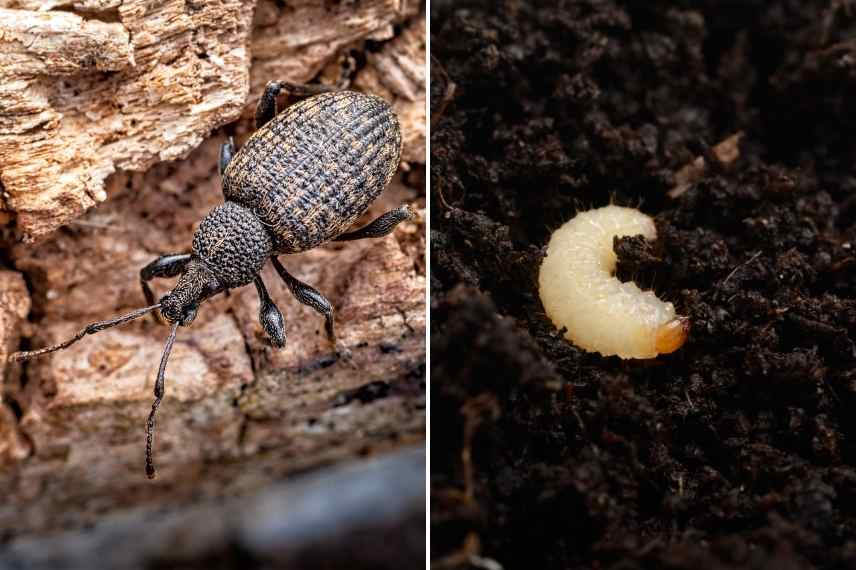
Vine weevil and its larva
Life cycle
The vine weevil spends the majority of its life as a larva. It generally takes one year before emerging and becoming a fully formed adult. During this period spent underground, it feeds on roots of plants.
In spring, the larva pupates and gives rise to adults that do not need to mate to lay eggs. Indeed, females reproduce by parthenogenesis (reproduction without fertilization of eggs). They can lay up to 600 eggs a night at the base of roots.
Adults feed only on plant leaves, causing much milder damage than larvae, and are incapable of flying.
Hot, dry summers and mild, fairly dry winters favour this species — needless to say, it has a bright future ahead!
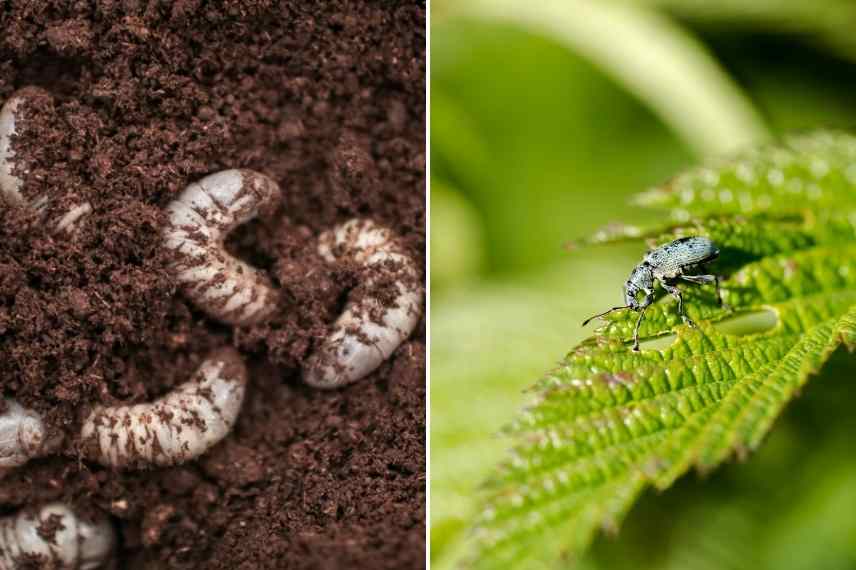
Vine weevil larvae and adult insect
Discover other Insect traps and pheromones
View all →Signs of its presence
Larva is very often found right in middle of root stumps of ageing perennials left too long in same place. This white grub can also be found in pots or planters. Roots or rootstocks become damaged and hollowed out into small chambers where larva spends most of its time. Plant stops growth and gradually wilts. It becomes stunted and lacks vigour.
Adults, meanwhile, puncture lamina from outer edges of leaves, creating holes of varying depth and irregular shape.
This sign can be mistaken for damage caused by leaf-cutting bees (Megachilidae), which cut leaves more deeply and more neatly (in semicircular shapes).

Typical perforation on a Rhododendron leaf (©Oregon State University)
Which plants are affected?
Needless to say, it is not fussy about its menu! Dozens of plants are subject to its attacks, including several used for food in the garden. Strawberries, raspberries and vines are regularly attacked.
In the ornamental garden, to name but a few:
- Bushes: yews, spindle trees, cherry laurels, lilacs, photinias, rhododendrons, privets, viburnums are targeted by these weevils;
- Perennials: astilbes, tuberous begonias, bergenias, heucheras, liriope, lily-of-the-valley, saxifrages, sedums, tiarellas are likely to suffer their attacks.
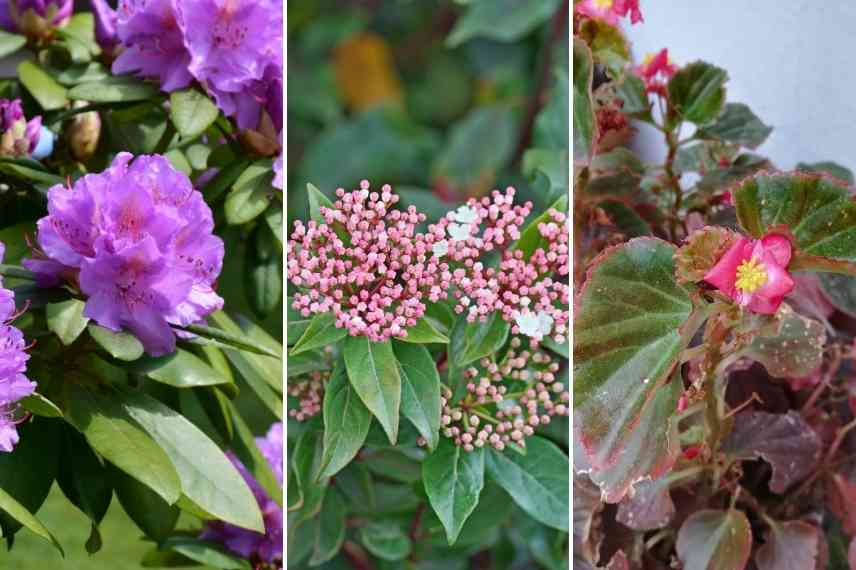
Rhododendrons (and ericaceous bushes), laurustinus, begonias are among plants often attacked by vine weevils
Control measures
Natural treatments
There are several ways to tackle this beetle effectively :
- Spraying nematodes (Heterorhabditis bacteriophora) is undoubtedly the most effective and least polluting measure against this pest. Nematodes will parasitise the larvae and kill them from the inside, in the manner of a solitary worm. This powder to be diluted should be applied from April through autumn to kill larvae before pupation. Keep soil well moist during the days that follow or the nematodes may perish. Do not spray below 12°C as the nematode species used is rather cold-sensitive! Find our nematodes against white grubs in our online shop.
- Hand-picking is a good way to curb adult proliferation in summer. Simply walk around the garden at dusk with a torch and collect them.
- Mulching, which retains soil moisture, disrupts the larval cycle as the larvae do not much like moisture.
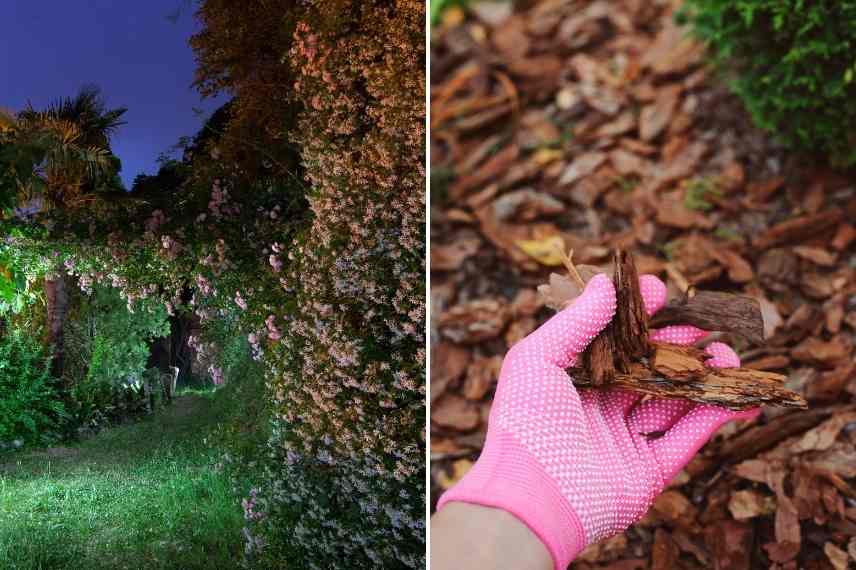
Removing vine weevils manually at night when they emerge and mulching susceptible bushes are two methods to use to get rid of them
Prevention
- Check carefully the root balls of plants you buy to avoid introducing the species into your garden. If you see attacked roots and are unsure, refrain from buying as a precaution;
- Make space for hedgehogs in your garden! They eat larvae present in the superficial soil. Create a small pile of wood or leaves in a corner of the garden to encourage them to stay nearby;
- If you have chickens, let them roam occasionally in your garden. They can scratch the soil and flush out larvae!
- Several plants are thought to repel this species: rosemary, thyme, garlic, ground pepper. However, no serious study has confirmed their effectiveness.
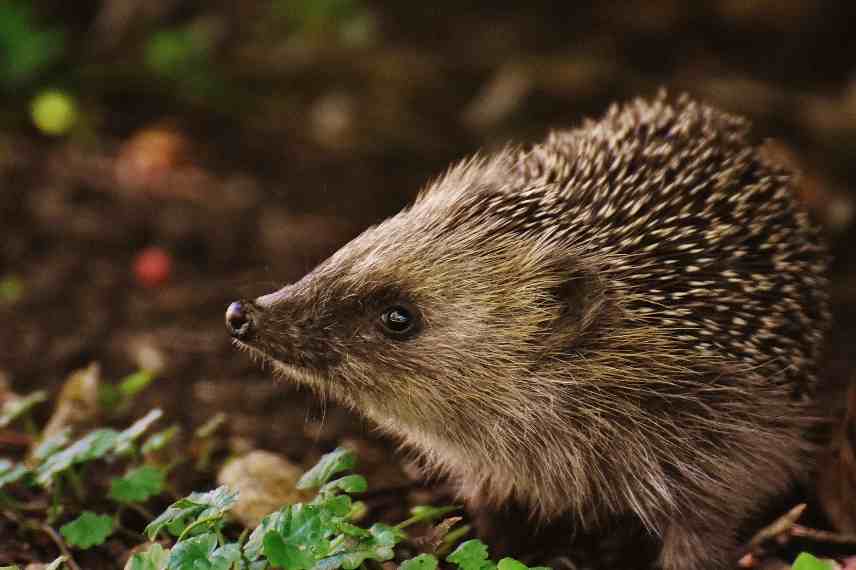
Hedgehog, nocturnal predator and ally of your garden!
François’s tip: This charming little beast prefers to attack older or stressed plants! Think about dividing or renewing your perennials regularly and planting them in a spot they like.
- Subscribe!
- Contents
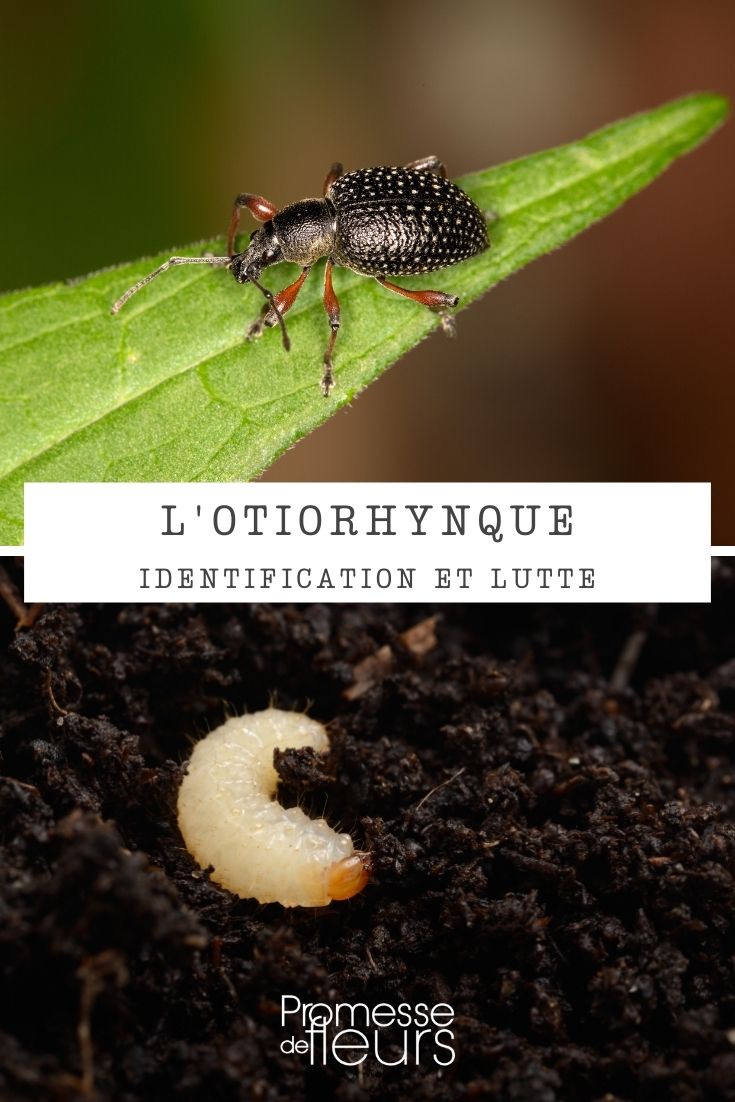































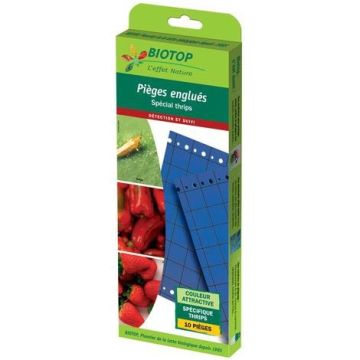
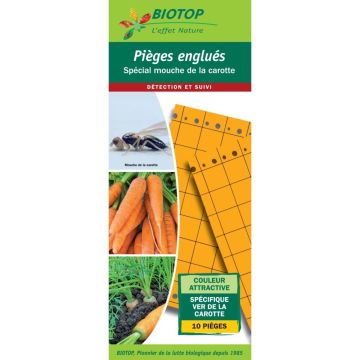
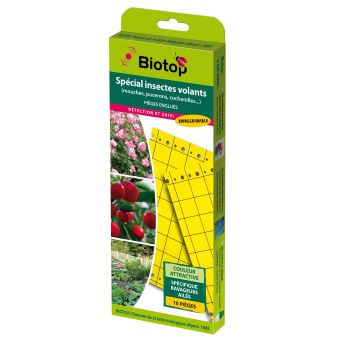
Comments